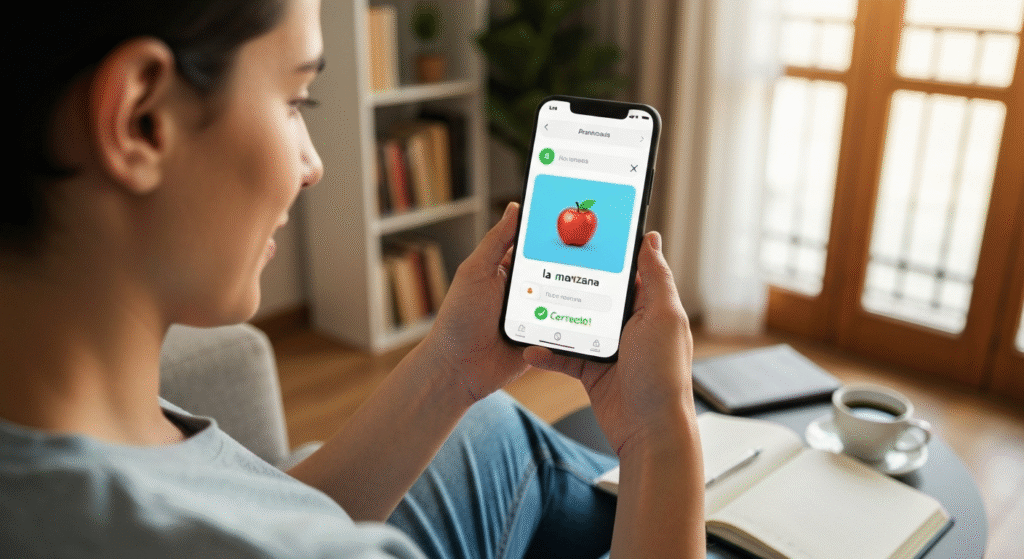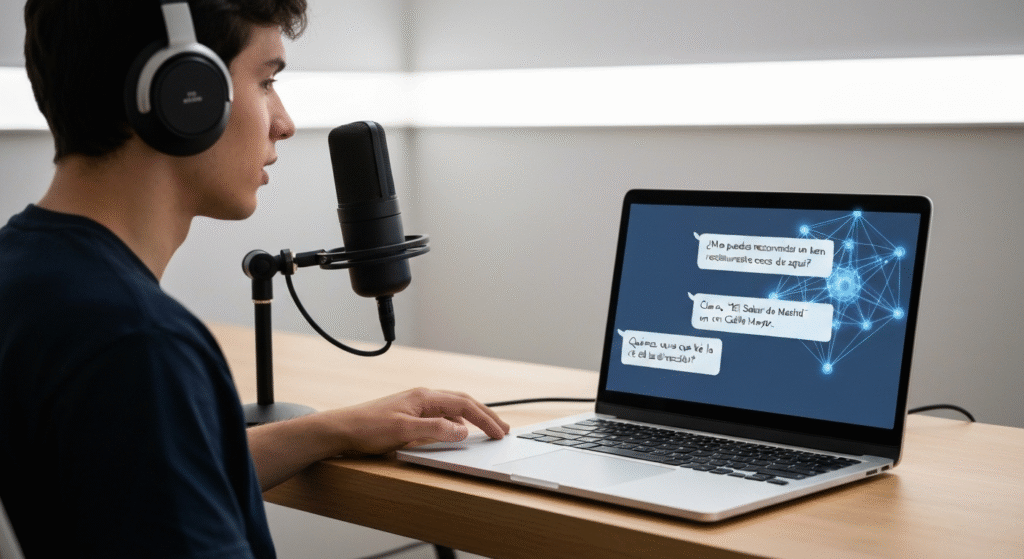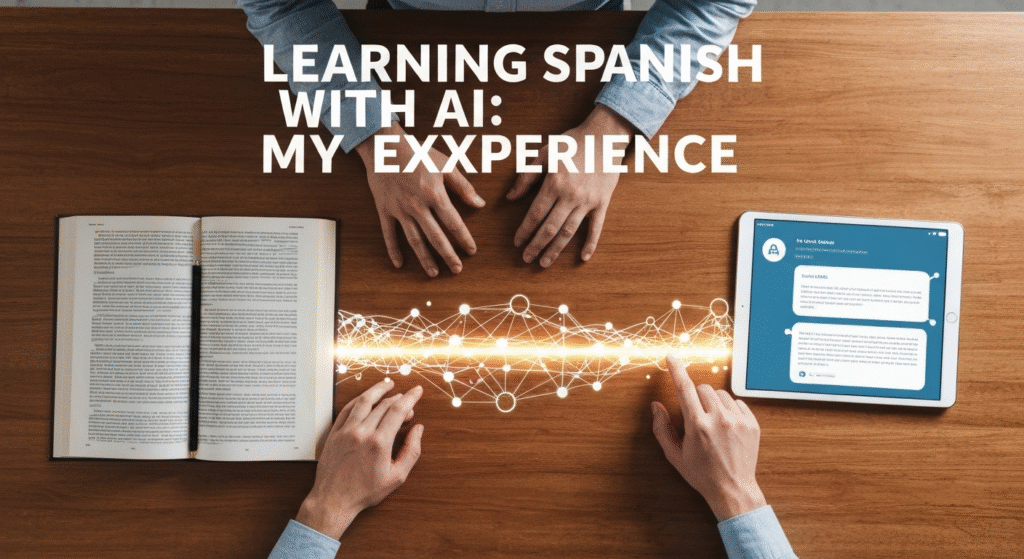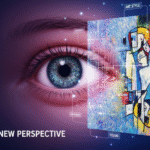Learning a new language often feels like standing at the base of a huge mountain. You know the view from the top will be amazing, but the climb looks intimidating. For me, that mountain was Spanish. I wanted to move beyond “hola” and “gracias,” but the thought of rigid grammar classes and awkward beginner conversations was holding me back. Then came the explosion of AI tools, all promising a faster, smarter way to learn. Could an algorithm really be the guide I needed?
I decided to put it to the test. Not just by downloading an app and playing around, but by seriously trying to use AI as my primary teacher for learning Spanish. This isn’t a review of a dozen different apps. It’s the story of my journey—a chronicle of what actually helped me make progress, what turned out to be clever marketing, and where the digital world had to make way for real human connection. If you’re wondering whether AI can truly help you learn a language, my experience might offer some answers.
My name is Zain Mhd, and for the past several years, I’ve been immersed in the world of artificial intelligence, writing and exploring how it’s changing our lives. My work is driven by a deep curiosity about what this technology can actually do when you take it out of the lab and apply it to real-world challenges. Learning Spanish felt like the perfect personal project to see past the hype. This journey wasn’t for a research paper; it was born from a genuine desire to connect with a new culture and see if AI could be the bridge to get there.
Setting the Stage: My Starting Point and Language Goals
Before I downloaded a single app, I had to be honest about where I was starting from. My Spanish was practically non-existent. I knew a few words from movies and travel, but I couldn’t form a sentence to save my life. I wasn’t aiming for perfect fluency overnight. I wanted realistic, measurable goals that would keep me motivated.
Here’s what I set out to achieve in six months:
- Month 1: Master basic greetings and build a core vocabulary of 200 essential words.
- Month 3: Be able to hold a simple, 5-minute conversation about myself, my hobbies, and my day.
- Month 6: Understand the main points of a slow-paced Spanish podcast or news report and order a meal at a restaurant with confidence.
My plan was to lean heavily on AI tools first. I wanted to see how far technology alone could take me before I turned to more traditional methods like textbooks or tutors. The goal was to build a solid foundation using the convenience and accessibility of AI.
The First 30 Days: Diving into AI-Powered Apps

The first month was all about building a foundation. I focused on tools that promised to make vocabulary and basic grammar feel less like a chore. I spent most of my time with a couple of the big names in the language-learning app world, specifically those that heavily promoted their AI features for personalized learning and pronunciation.
Gamification and Vocabulary Building
My initial experience was actually quite fun. The gamified nature of these apps, with points, leaderboards, and daily streaks, was surprisingly effective at getting me to practice every day. The core of this stage was the AI-powered spaced repetition system (SRS). This algorithm tracks which words you struggle with and shows them to you more frequently, just before you’re about to forget them.
I found this incredibly efficient for raw memorization. Words like el perro (the dog) or la casa (the house) stuck in my head because the app knew exactly when to quiz me on them. It felt like a smart, adaptive set of flashcards. However, I quickly noticed a downside. The words were often presented without much context. I knew the word for “apple” (la manzana), but I didn’t know how to use it in a sentence beyond the one the app gave me. It was effective for building a word bank, but not for understanding how those words connect.
AI Tutors and Pronunciation Feedback
One of the features I was most excited about was the AI-powered pronunciation feedback. You speak a phrase into your phone, and the AI rates your accent. In the beginning, this was a huge confidence booster. It would highlight words where my pronunciation was off, like my struggle to roll my ‘r’s in the word carro (car). Getting instant, private feedback without the embarrassment of speaking to a person was a game-changer.
But after a few weeks, I hit a wall. The AI was great at catching major errors, but it couldn’t explain why my pronunciation was wrong. It would simply say “try again.” It couldn’t tell me to put my tongue in a different position or to use more air. This is where the limitations of a machine tutor became clear.
Here’s a quick breakdown of my experience with the features of popular AI apps in that first month:
| Feature | My Experience | Effectiveness Rating (out of 5) |
| Gamified Lessons | Highly engaging and motivating for daily practice. Great for beginners to build a habit. | ⭐⭐⭐⭐ |
| Spaced Repetition | Excellent for memorizing a large volume of vocabulary quickly and efficiently. | ⭐⭐⭐⭐⭐ |
| AI Chatbots (Basic) | Good for practicing set phrases but felt very robotic and limited in scope. | ⭐⭐ |
| Pronunciation Analysis | Useful for catching obvious mistakes but lacked the detailed feedback needed for true refinement. | ⭐⭐⭐ |
| Grammar Explanations | Often too brief or automated. I had to go to external sites for deeper understanding. | ⭐⭐ |
Moving Beyond the Basics: Using Generative AI for Conversation

After the first month, I knew I needed more than just flashcards and pronunciation drills. I needed to actually use the language. This is where I turned to more advanced generative AI, like ChatGPT, to simulate real conversations. This was a turning point in my learning process.
My Experiments with AI Role-Playing
Instead of relying on the scripted chatbots in language apps, I started creating my own scenarios with a large language model. I would give it a prompt like, “Let’s role-play. I am a tourist in Madrid, and you are a café owner. I want to order a coffee and a pastry in Spanish. Correct my mistakes and explain them to me.”
The difference was night and day. The conversations were dynamic. The AI could adapt to my questions and my errors. If I made a mistake, I could ask, “Why did you use un instead of una?” and get an instant, detailed grammar lesson. It was like having a patient, all-knowing tutor available 24/7. This practice was instrumental in getting me comfortable with forming sentences and thinking on my feet, directly helping me work toward my three-month goal.
Grammar Explanations on Demand
Complex grammar was my biggest fear. Concepts like the difference between the two “to be” verbs in Spanish, ser and estar, were confusing. Textbooks often provided dense, academic explanations. With AI, I could ask for a simple breakdown.
For instance, I once asked the AI to explain the subjunctive mood as if I were a ten-year-old. The simple, analogy-based explanation it gave me was a lightbulb moment. It finally clicked. This ability to get customized, easy-to-understand explanations for complex topics was one of the most powerful uses of AI in my journey.
Here are a few of the prompts that I found most useful for this stage:
- “Pretend you are my Spanish language tutor. Let’s have a 10-minute conversation about my weekend. Please ask me questions and correct any grammatical errors I make.”
- “Explain the difference between por and para using three simple examples for each.”
- “Give me five common idioms used in Spain and explain what they mean.”
- “Write a short story in simple Spanish about a trip to the beach. Then, provide a list of the key vocabulary and verbs used.”
The Plateau: Where AI Fell Short and Human Interaction Became Essential

Around the four-month mark, I started to feel my progress slow down. I had a decent vocabulary and could handle predictable conversations with an AI. But I knew I was missing something. My Spanish was technically correct, but it was stiff and unnatural. It lacked a human touch.
Understanding Nuance, Slang, and Culture
AI is trained on vast amounts of text, but it often struggles with the subtle, unwritten rules of a language. It couldn’t teach me the cultural context behind a phrase or the right time to use a particular slang term. I remember trying to use a formal phrase the AI taught me with a friend from Colombia, who laughed and told me, “Nobody actually talks like that!” That’s when I realized that language is more than just words and rules; it’s a living, breathing part of a culture. An AI can’t share a joke, catch the sarcastic tone in your voice, or understand the body language that comes with a conversation.
The Need for Real-World Speaking Practice
The biggest limitation of learning with AI is that it’s too perfect and too patient. It never gets tired, it never interrupts you, and it always understands what you’re trying to say, even with mistakes. Real conversations are messy. People talk over each other, they use filler words, and they have unique accents.
I decided to find a language exchange partner online. My first real conversation with a native speaker was terrifying but exhilarating. I stumbled over my words, forgot basic vocabulary, and had to ask him to repeat himself constantly. But it was also the moment I felt my learning truly accelerate. The feedback was immediate and real. This experience taught me something AI never could: how to listen and react in a spontaneous, unpredictable environment.
Here’s how AI practice stacked up against talking to a real person:
| Aspect | AI Conversation Partner | Human Conversation Partner |
| Availability | Available 24/7, instantly. | Depends on scheduling and time zones. |
| Patience | Infinitely patient. No judgment or frustration. | Varies. A good partner is patient, but it’s a human interaction. |
| Corrections | Can provide instant, accurate grammatical corrections and explanations. | Corrections are spontaneous and may not always be grammatically perfect. |
| Spontaneity | Lacks true spontaneity. Conversations can feel predictable. | Unpredictable and dynamic. Teaches you to think on your feet. |
| Cultural Nuance | Cannot teach cultural context, slang, humor, or non-verbal cues. | The best way to learn the living, cultural side of the language. |
| Cost | Generally free or low-cost. | Can be free (language exchange) or require payment (tutor). |
My Hybrid Approach: Integrating AI with Traditional Learning
After hitting that plateau, I didn’t abandon AI. Instead, I changed my approach. I realized that the question isn’t “AI vs. human.” It’s “How can AI and human interaction work together?” I developed a hybrid system that used each for its strengths.
My weekly schedule started to look like this:
- Daily (15-20 mins): Use an AI app for vocabulary drills and spaced repetition to keep words fresh in my mind.
- Three times a week (20 mins): Practice role-playing conversations with a generative AI to build confidence and sentence structure.
- Twice a week (30 mins): Have a real conversation with my language exchange partner to practice spontaneous speaking and listening.
- Once a week (1-2 hours): Watch a movie or listen to a podcast in Spanish to immerse myself in the natural flow and rhythm of the language. (For more on this, check out a great guide on using media for language learning from the University of North Carolina. Source: “Using Foreign Language Media” – UNC-Chapel Hill)
This balanced approach was the key. AI became my personal gym for drilling the fundamentals, while real-world interaction was the actual game where I put those skills to the test.
The Verdict: Was Learning Spanish with AI Tools Worth It?
So, after six months, did I reach my goals? For the most part, yes. I can now have simple, flowing conversations, and I recently navigated a trip to a local Spanish restaurant entirely in Spanish. The journey proved that learning Spanish with AI tools is not only possible but incredibly effective—up to a point.
AI is an outstanding supplement. It’s a tireless drill sergeant for vocabulary, a patient tutor for grammar, and a non-judgmental partner for your first awkward speaking attempts. It can dramatically speed up the early stages of learning and help you build a solid foundation faster than traditional methods alone.
However, it is not a replacement for human connection. To truly learn a language, you have to connect with the people and the culture behind it. AI can give you the words, but only a human can teach you the music.
Frequently Asked Questions (FAQs)
Can you become fluent in Spanish using only AI?
Based on my experience, no. You can reach an intermediate level and build a strong vocabulary and grammar base, but fluency requires the nuance and spontaneity that only come from real human interaction.
What’s the best free AI tool for learning Spanish?
For conversational practice, using the free versions of large language models like ChatGPT or Gemini to create role-playing scenarios is incredibly powerful. For vocabulary, many apps like Duolingo or Memrise offer robust free versions.
How can I avoid getting bored with AI language apps?
Mix it up. Don’t just rely on one app. Combine app-based learning with generative AI for conversations, and most importantly, integrate real-world media like Spanish music, movies, or podcasts to keep the content fresh and exciting.
Is AI good for learning correct pronunciation?
It’s a good starting point. AI can catch major errors and help you get comfortable with the sounds of the language. However, for refining your accent, nothing beats listening to and getting feedback from native speakers.
Conclusion
My journey to learn Spanish with AI was one of discovery. I learned that AI is not a magic bullet, but it is a remarkably powerful tool when used correctly. It’s a co-pilot that can help you navigate the difficult early terrain of language learning, making the path smoother and the progress faster. It prepares you for the most important part of the journey: connecting with another person in their native tongue. The future of language learning isn’t a classroom or an app; it’s a smart combination of both, where technology serves our most human desire—the desire to understand and be understood.


